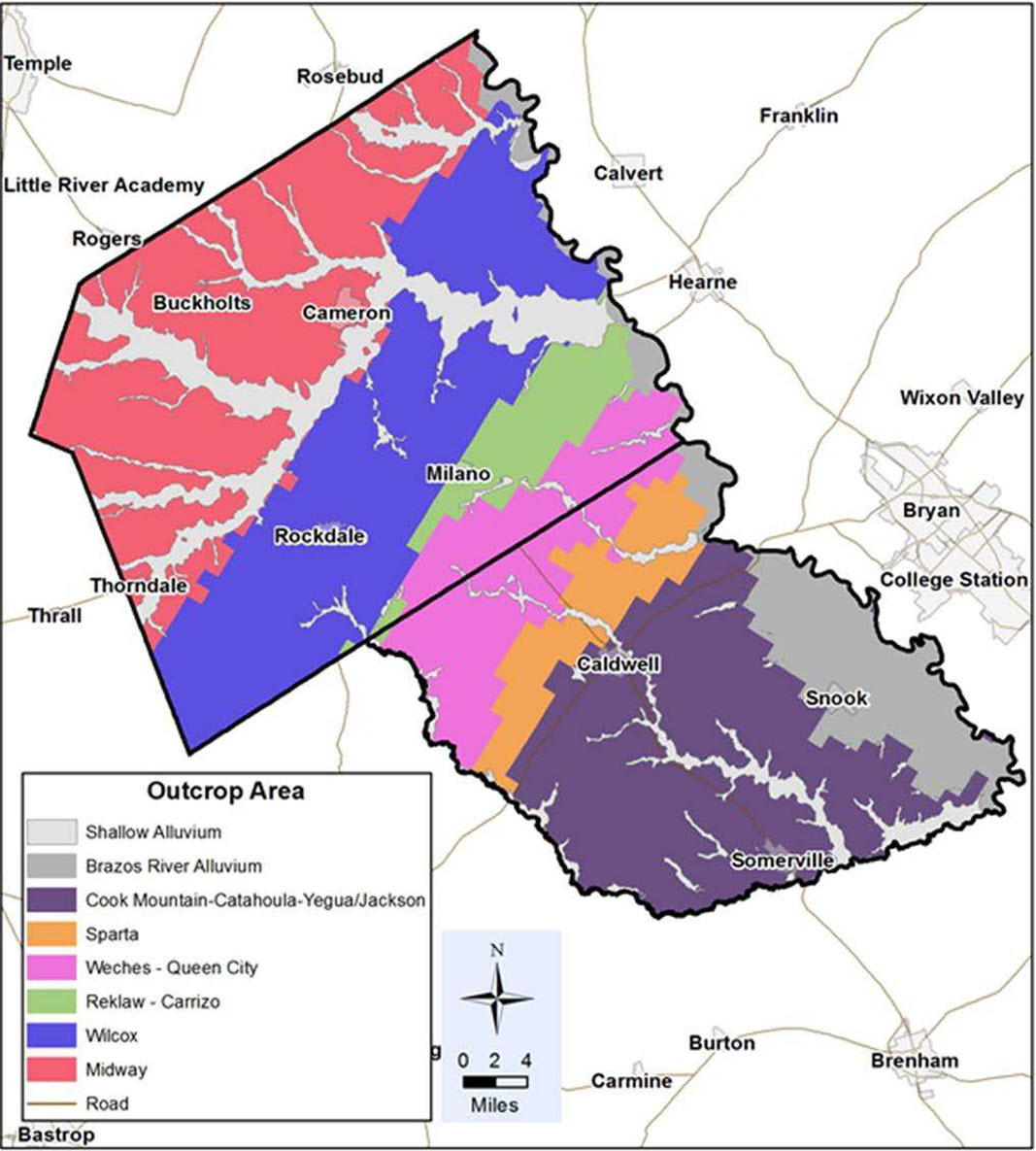About Post Oak Savannah Groundwater Conservation District (POSGCD)
The Post Oak Savannah Groundwater Conservation District (POSGCD) was created in Milam and Burleson counties by House Bill 1784, enacted by the 77th Texas Legislature in 2001 and confirmed through local elections in November 2002.
The purpose of POSGCD is to provide local control over groundwater resources in the central Carrizo-Wilcox area. The District’s mission includes conserving and preserving groundwater, protecting users and recharge areas, preventing pollution and waste, controlling subsidence due to groundwater withdrawal, and regulating groundwater transport beyond the District’s boundaries.
POSGCD is governed by a 10-member Board of Directors—five from each county—and operates without taxing authority. Instead, all revenue is generated through fees on municipal and commercial groundwater pumpers and transporters.
The District is a member of two regional Groundwater Management Areas (GMAs): GMA 12 and GMA 8, as designated by the Texas Water Development Board. Through participation in the joint planning process, POSGCD helps establish Desired Future Conditions (DFCs) for aquifers within its boundaries by evaluating groundwater availability models, historical data, and projected needs. Management goals and objectives are developed to align with the adopted DFCs of both GMAs.
Post Oak Savannah GCD Mission
The Post Oak Savannah Groundwater Conservation District (POSGCD) mission is to adopt and enforce Rules consistent with State law and based on best available science, which provide for the conservation, preservation, protection, recharging, and prevention of waste of groundwater, while supporting the ownership of groundwater and the owner’s right to assign or produce that property.
Within POSGCD are several major aquifers, including the Carrizo-Wilcox, Trinity, Queen City, Sparta, and Brazos River Alluvium. The District is divided into groundwater management zones to support tailored strategies for each aquifer’s unique characteristics. Projected water availability for each aquifer is based on data from the 2002 State Water Planning Database.
POSGCD is governed by several key documents, including its rules, management plan, board policies, and investment policies. Financial information for the District is publicly available here.


